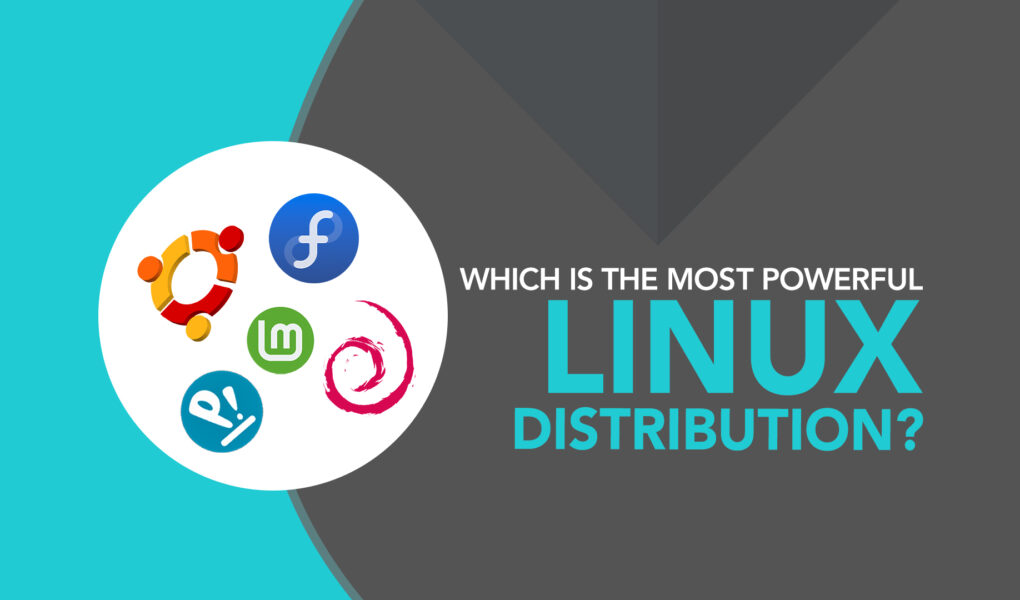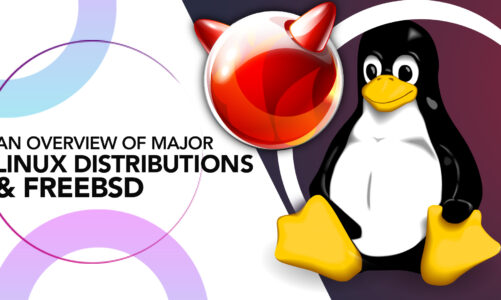As a tech enthusiast or a professional seeking an operating system that offers customization options, free software packages, and open-source functionality, you may be wondering which Linux distro is the most powerful. It can be an intimidating challenge to discover the right choice among the numerous options that are accessible.
Well, this article is going to be all about exploring the options that are rated as the most powerful in terms of performance and prospective features. Let’s start checking out, and then you can opt for the one that suits the best for your needs.
Powerful Linux Distributions
7 Powerful Linux distributions with pro and cons are mentioned below:
1: Ubuntu
Ubuntu Desktop is a widely used Linux distribution that is both free and well-suited for those who are new to Linux as well as professionals who use it for work, simultaneously making it a powerful distro. It features one of the friendliest graphical user interfaces in the Linux world, making it a great option for those new to the operating system. There are two versions available: the Long Term Support (LTS) version, which ensures security and maintenance updates for a duration of five years, and the standard version, which provides free updates for nine months post-release.
Pros:
- Large developer and user community
- Massive software repository
- Versatile and powerful operating system
Cons:
- Some proprietary software may not be available on Ubuntu
2: Kali Linux
Kali Linux is a Linux distribution derived from Debian and specifically tailored for advanced penetration testing and security auditing purposes. It comes equipped with hundreds of open-source tools, including Metasploit and Nmap, and is frequently updated to address the most recent exploits and security vulnerabilities present in popular software. Kali Linux also uses the Advanced Package Tool (APT) for managing software packages, making it easy for security professionals to keep their systems up-to-date.
Pros:
- Pre-installed with hundreds of open-source security tools
- Can run as a Live operating system without installation
- Supports 32-bit/64-bit PCs and advanced ARM architecture
Cons:
- Security features overwhelm beginners
- Requires powerful hardware to run smoothly
3: CentOS Stream
CentOS Stream is a community-driven Linux distribution based on Red Hat Enterprise Linux (RHEL) that guarantees regular updates, making it an ideal choice for businesses that prioritize stability, security, and long-term support. The design of the system prioritizes speed, stability, and security by omitting any extraneous features or applications. The sizable community support base ensures that security updates are promptly available to safeguard against vulnerabilities found in third-party software or company infrastructure.
Pros:
- Solid foundations in RHEL for rigorous testing
- Prompt security updates for server security
- Ideal for critical workloads such as web servers, databases, and virtual machines
Cons:
- Not always compatible with the latest hardware
4: Drauger OS
Drauger OS is a powerful Linux distribution that is optimized for gaming and offers a range of features and tools to meet the needs of gamers. The system employs the mainline Linux kernel, which is optimized for low latency by altering the scheduling frequency from 250Hz to 1000Hz. This modification enhances the system’s performance by delivering higher frame rates and reducing screen tearing.
The distro also supports most Xbox and Xbox360 controllers, as well as some PlayStation controllers, making it a great choice for gamers who want a high-performance system that can handle their gaming needs.
Pros:
- Pre-installed pro gaming tools
- Lightweight and fast
- Compatible with most Xbox and some PlayStation controllers
- Customizable Xfce 4.14 desktop
Cons:
- Limited software availability compared to other Linux distros
5: Pop!_OS
Pop!_OS is an exceptional Linux distribution designed from the ground up as a developer-friendly operating system. Developers have everything they need to create, modify, test, and deploy their projects with the wide range of pre-installed libraries and tools. Its developer-focused features, such as auto-tiling, workflow customization, and window stacking, enable developers to work seamlessly without distractions. As it encrypts right after installation, Pop!_OS considered the most secure.
Pros:
- Developer-focused, with pre-installed libraries and tools
- User-friendly
- High performance and optimized for modern hardware
Cons:
- Not as minimalistic as some users prefer
6: Elementary OS
Based on Ubuntu, it comes with a unique Pantheon desktop environment and numerous functions that impersonate Apple’s design choices. With its Mac-style interface, multiple workspaces, and minimalistic design, Elementary OS provides a user-friendly experience for those who value simplicity and ease of use.
Pros:
- Mac-style interface
- User-friendly design
- AppCenter for easy software installation
- Default apps mimic Apple’s design
Cons:
- Limited software compatibility
7: OpenSUSE
OpenSUSE is the ideal Linux distribution for power users, IT professionals, sysadmins, and coders. It requires minimal post-installation configuration and comes with specialized tools such as OBS, openQA, and Kiwi, making it a popular choice among developers and system administrators. Although primarily designed for tech experts, OpenSUSE can also be configured for everyday desktop use, thanks to YaST, a comprehensive system configuration and installation tool.
Pros:
- Extensive customization options
- Advanced package management system
- Comprehensive system configuration tool
- Pre-packed with drivers
Cons:
- Can be overwhelming for non-technical users
Final Thought
The debate over the most potent Linux distribution is an old one. Nevertheless, the ideal distro for an individual varies based on their unique requirements and inclinations. Nevertheless, we have found out that the above-listed Linux distributions are considered a few of the best, with each having their own unique strengths and weaknesses. Try them out now!



